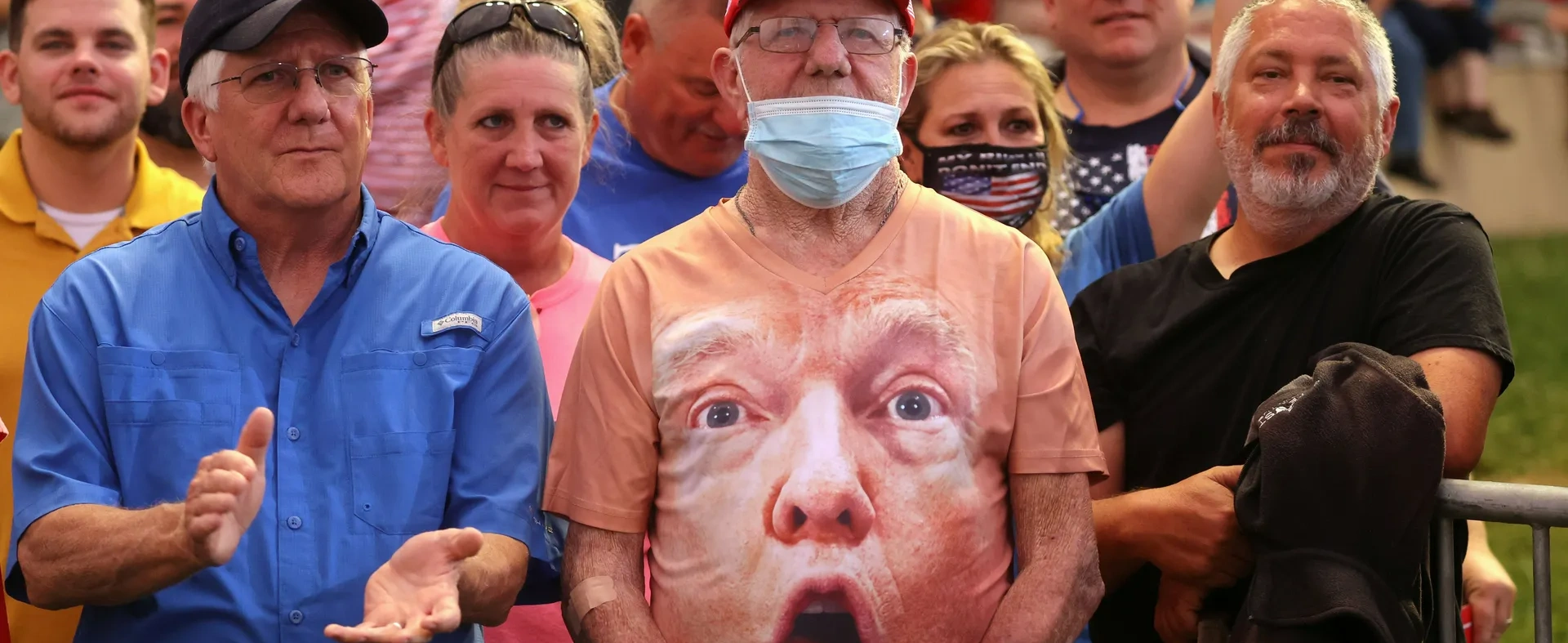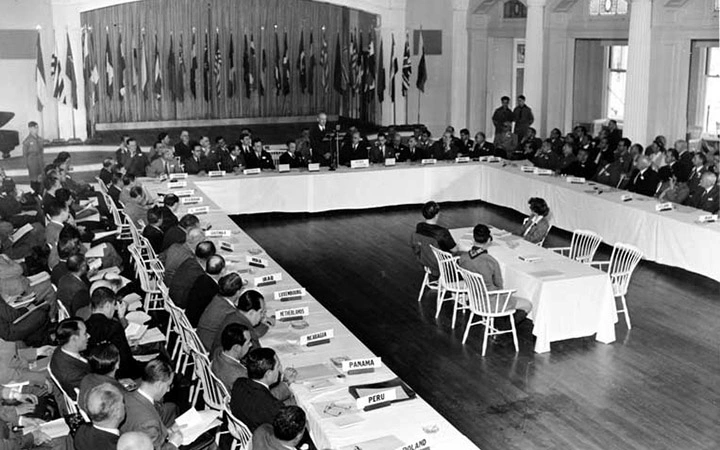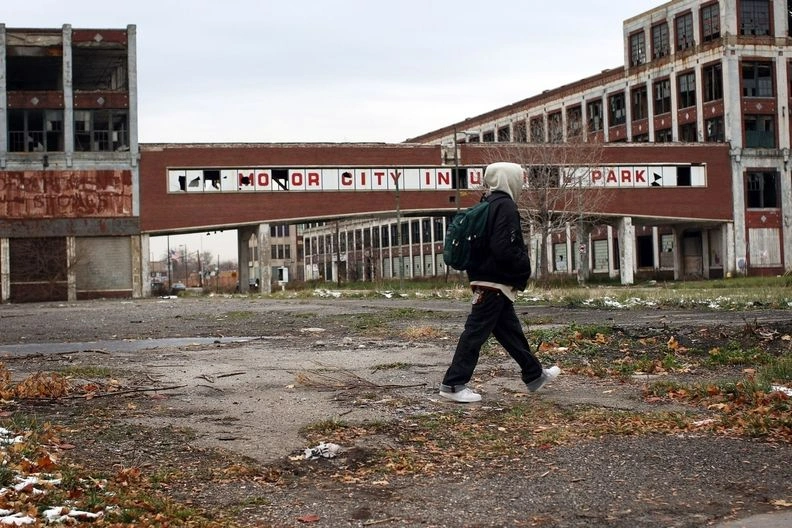Poor Choose Trump, Soon to Ditch Him Again

Embarking on a cross-country road trip across the United States, you will witness firsthand the reasons behind Trump’s victory.
In once bustling small towns where even post offices and shopping centers struggle to stay afloat, the streets are increasingly populated by drifters, and despair-induced deaths spread like an epidemic. Trailer parks, Amazon warehouses, and sporadic large prisons now occupy vast stretches of land that were once havens for happy living. Meanwhile, residents of thriving metropolises hop on planes to traverse this wasteland, flying from one super-wealthy city (usually on the coasts) to another.
How can Democrats possibly educate Americans that they shouldn’t be angry about economic hardships? Should it come as a surprise that these Democrats fell at the hands of Trump?
The question is: how did America fall to this point?
Looking back at the golden age of American capitalism, in the two decades following the end of World War II, the U.S. maintained a trade surplus, selling more products to the rest of the world than it bought. To achieve this, while Europe and Japan were in post-war ruins, the U.S. government did two things: they fixed the exchange rates between the dollar and allied currencies and sent a significant amount of dollars to allies (through aid and loans) so that ‘friendly’ foreigners could afford American goods. With these bold moves, the U.S. dollarization of Europe and Japan was achieved.
This system, also known as the Bretton Woods system, worked because America’s “surplus” meant that every Cadillac, Westinghouse refrigerator, and Boeing plane imported by Europe and Japan from the U.S. sent dollars flowing back to America — a perfect global cycle that aligned with capital interests worldwide.
 The scene is set at the Bretton Woods Conference in Bretton Woods, New Hampshire, in July 1944
The scene is set at the Bretton Woods Conference in Bretton Woods, New Hampshire, in July 1944
However, at the peak of the Vietnam War, two developments changed everything: first, American factories were outperformed by German and Japanese factories, leading to a trade deficit for the U.S. — meaning America was importing more than it was exporting. Secondly, a significant amount of dollars from the Pentagon spent on the Vietnam War and maintaining European military bases eventually flowed into European and Japanese banks. Consequently, dollars continued to leave U.S., entering European and Japanese dollar pools.
These dollars ultimately reached foreign central banks. For a time, these central banks used fixed exchange rates with their local currencies to exchange dollars for their own currency or to buy gold at the promised fixed rate of $35 per ounce set by the U.S. government. However, in August 1971, President Nixon dismantled this mechanism, ending fixed exchange rates and the fixed price of gold at $35 per ounce.
Suddenly, the German mark, the yen, and many other foreign currencies appreciated significantly, damaging their export industries. Foreign central banks were in a dilemma, unsure of what to do with the large amount of dollars in their reserves. For instance, if the Deutsche Bank used these dollars to buy marks, the demand for the German currency would increase, causing the mark to appreciate further, further hurting German exports. Therefore, these foreign central banks chose to buy U.S. Treasury bonds with dollars.
And so it began: America’s trade deficit indirectly supplied funds to the U.S. government and immediately created demand for net U.S. exports from capitalists in countries like Germany, Japan, and Saudi Arabia. In return, foreign capitalists bought U.S. government bonds, real estate in New York, California, and Miami, and a small portion of stocks in companies allowed by Washington.
In the 1980s, Ronald Reagan’s tax-cut policies without a financial bottom inadvertently led to further growth of America’s fiscal deficit and power: the increase in government deficits stimulated global demand, greasing the wheels of financialization. Foreign capitalists sent dollars back to the U.S., purchasing more U.S. bonds and real estate. Asset prices across America surged. While Reagan reveled in the glory of economic prosperity, America was becoming an increasingly costly place for business.
Around that time, China began its reform and opening up, entering this peculiar global dollar recycling mechanism driven by U.S. trade and government deficits. China benefited from this mechanism’s rapid development, which in turn accelerated as Chinese enterprises returned dollars from net exports to the U.S., supporting the U.S. government budget, Wall Street banks, and real estate developers on the East and West coasts.
American corporations suddenly realized: if the cost of doing business in the U.S. was rising, why not move production lines to China, where land and labor were much cheaper? Thus, the U.S. began its deindustrialization process, ultimately leading to the decay of vast areas in the heartland. Simultaneously, America’s rentier class and financiers amassed enormous wealth.
From this perspective, America’s ruling class, through promoting deindustrialization, initiated a class struggle against American workers and the petite bourgeoisie, transforming themselves into a parasitic rentier class. They no longer profited from production but from real estate deals and financial speculation. While tax-cut policies without budgetary support facilitated their enrichment, they exacerbated America’s public debt problem. Foreign central banks had no choice but to continue buying U.S. Treasury bonds.
 Since the 1980s, the Northeast and Midwest regions of the United States have been in decline, forming the “Rust Belt” and becoming swing states that determine elections.
Since the 1980s, the Northeast and Midwest regions of the United States have been in decline, forming the “Rust Belt” and becoming swing states that determine elections.
Meanwhile, in the Midwest, Americans and the working class have fallen into a trap of poverty, debt, and worsening health conditions. Additionally, as the tsunami of debt dollars accelerated through Wall Street, bankers there devised extremely complex ways to bet on various asset prices and, disastrously, on each other’s bets. These debt-fueled wagers eventually collapsed like a mountain, leading to the 2008 U.S. financial crisis. Soon after, millions of Americans lost their homes, jobs, and dignity.
Barack Obama was elected president at that time, relying on promises to help the many victims of the crisis and punish the few who caused it. Tragically, his actual actions were the opposite: in one of the most staggering political betrayals in American history, the U.S. Treasury Secretaries appointed by Obama (Timothy Geithner and Larry Summers) were the very architects of the disaster that destroyed the livelihoods of millions of Americans in 2008 by allowing Wall Street to run amok. And the reason for appointing these people? To provide guarantees for bankers akin to crimes, while imposing austerity measures on the majority of Americans. From this perspective, the rise of Trump’s political career should be credited to… Mr. Obama.
Most American voters, feeling impoverished in a ridiculously wealthy country, chose to embrace Trump’s propositions. What’s so surprising about that? Furthermore, another viewpoint of Trump’s—that wars, NATO’s role, and military might were never the reasons for America’s true strength—also resonated with voters. However, Trump never exposed the real reason America maintained its dominance after losing its trade surplus in the late 1960s—the global dollar debt recycling system controlled by the U.S.
Alas, despite winning the election, Trump will soon be forced to make a disastrous choice. Trump claims that imposing exorbitant tariffs on products exported to the U.S. from China and Europe will prevent the “slaughter” facing the American heartland. Even if these massive tariffs help achieve reindustrialization in America’s deindustrialized heartland (which is questionable), they will shrink the profits of foreign capitalists, thus reducing the dollars they funnel to Wall Street, lowering investments in financial products and real estate—a significant blow to Trump’s close friends in the financial and real estate markets.
In conclusion, Trump faces two choices: on one hand, to be faithful to the majority of Americans, he can break the cycle between America’s deficits and the income of the profiteering class, which is also a pillar for maintaining American hegemony; on the other hand, Trump can choose to uphold the robustness of America’s financial and real estate markets. But he can never have both!
Before long, the majority of Americans who voted for Trump will realize, just like they did with President Obama in 2009, that Trump has betrayed them, and they will turn away from him.
Editor: Leo Cai




Anonymous
Gallantly well in Real Economics